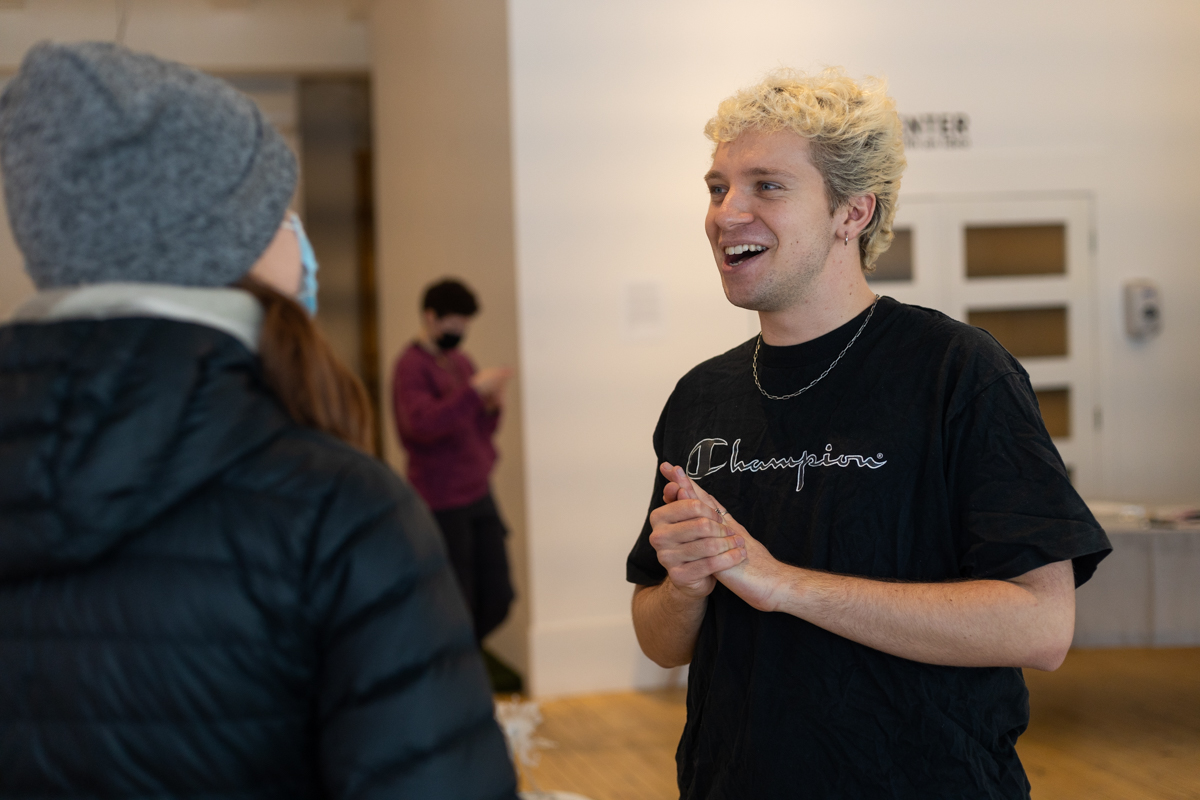The successful debut exhibit, curated by Giulio Cuccagna, featured an array of works from ten artists
Early on a Monday afternoon, as I intently observed Giulio Cuccagna and his team place various works of art on the white walls of a beautifully worn-in gallery on St. Catherine St. that belongs to Smarkt, I began to wonder what exactly it takes to bring together an art exhibit like the one that was currently being set up in front of me. For Cuccagna, the process was trying at times, but he managed to carefully sift through dozens of submissions, choose a venue, and arrange the exhibit program in a matter of three months. And during a pandemic, no less.
The Concordia Fine Arts student is in his third year, studying art history and film, with a minor in interdisciplinary studies in sexuality. Cuccagna grew up in Italy, where he recalled never being exposed to queer love stories. It wasn’t until he moved to Montreal that he began to see and experience differing expressions of love. “These experiences have driven me to curate an exhibit that would not only showcase these representations, but also bring the community together,” reads Cuccagna’s artist statement. The Queer Love exhibit, which took place on Valentine’s Day, featured works from 10 different artists, all in varying mediums. These works included paintings, sculptures, and more. Additionally, during the evening, there were live performances from Anna Justen and Monsieurmadam, and delectable food from Maison Choma to enjoy.
The first step in the process of bringing together the Queer Love exhibit was a call-out for submissions from artists. “It was one of my favourite parts of the curation,” said Cuccagna. “I posted an open call on my Instagram, announcing that I was going to curate an exhibit on queer love and for those interested to submit their work to my email.” Within two weeks, Cuccagna received at least 50 submissions. “It was so heartwarming seeing that many people wanted to participate. My criteria was very simple. I wasn’t just looking for artworks that would fit the theme. I was looking for diversity and uniqueness. I wanted to showcase works that would represent queer love in all forms, shapes, gender, and ethnicity.”
Cuccagna believes that art dealing with identity, especially those that engage with personal struggles and emotions, helps artists progress and initiate social change. He admits that he often struggled with low self-esteem in regards to his future and career prior to this exhibit. “Now, I feel like this is the first time in my life I’ve done something ‘big,’ professionally and artistically speaking. As many of my peers [also felt], these past two years have been hell,” said Cuccagna. “We’ve all felt extremely down and unmotivated. I was so tired of waiting and being scared of the future, that I just told myself to do it. I’m also very lucky to be surrounded by the most supportive people, which have pushed me so hard to follow this dream of mine.”
Cuccagna offers some advice for fellow artists and Fine Arts students looking to take on a similar project: “Don’t be afraid to take risks and make mistakes. Finding an affordable and available venue will be hard, so I would say to go through that research months in advance. I wouldn’t say you have to be the most organized person, but definitely write down all your ideas, make layouts and be patient!” Cuccagna also encourages artists to anticipate and be receptive to feedback, as it’s the most helpful part of the process. “There will be conflict and struggles through it, but you have to manage to stay positive because the outcome will be such a rewarding and amazing experience.”
Photos by Catherine Reynolds
